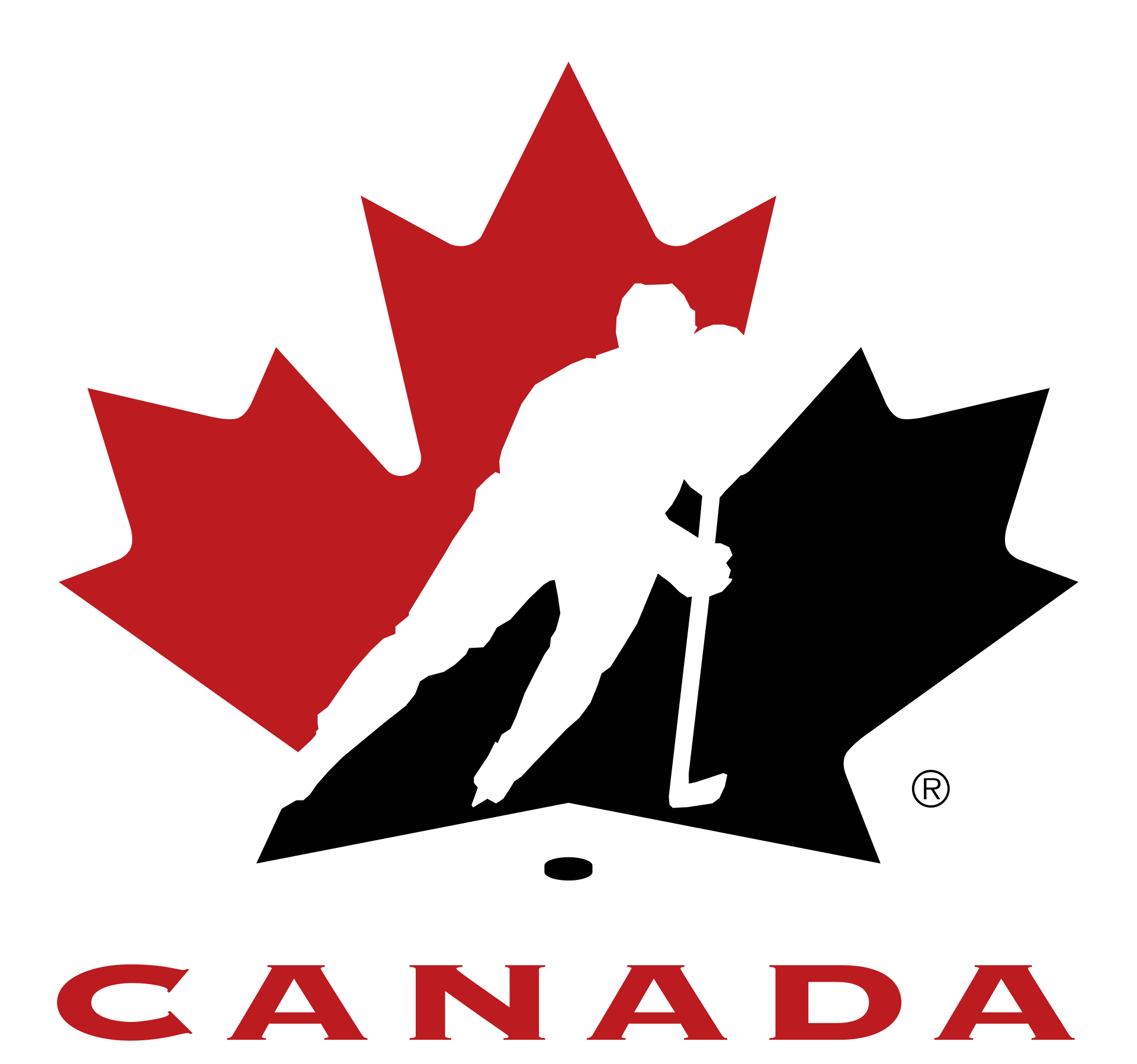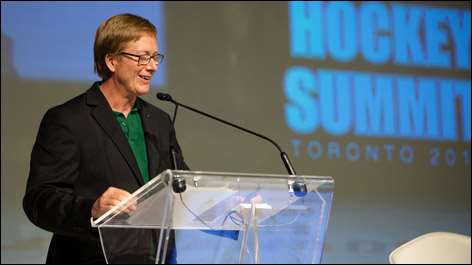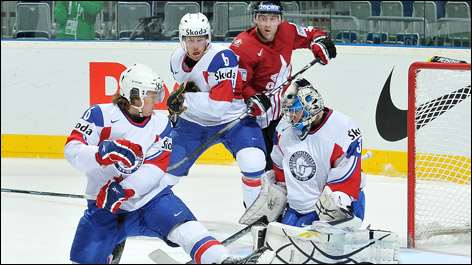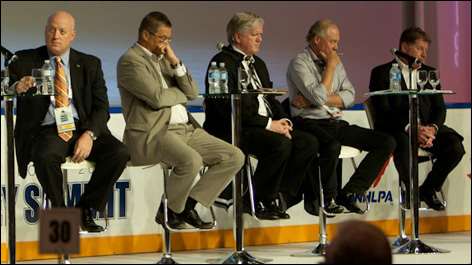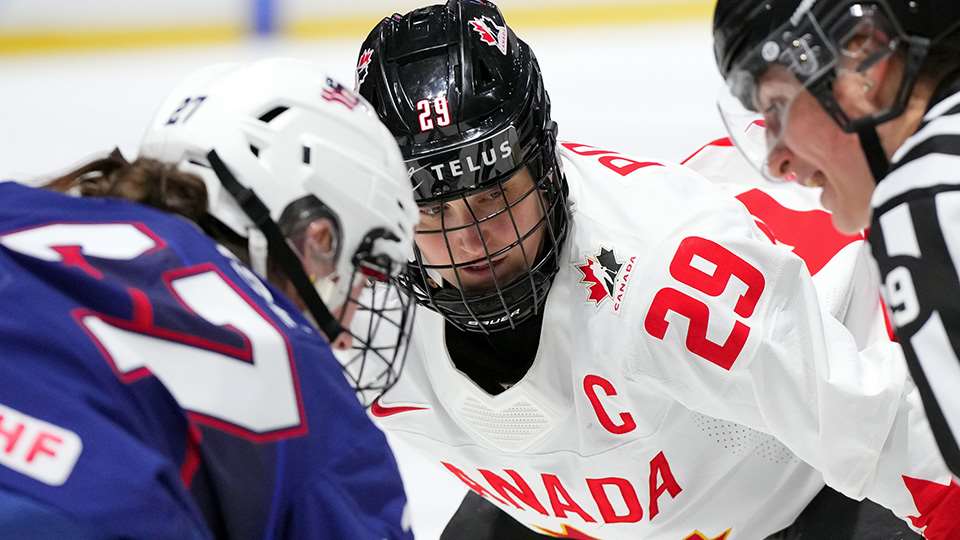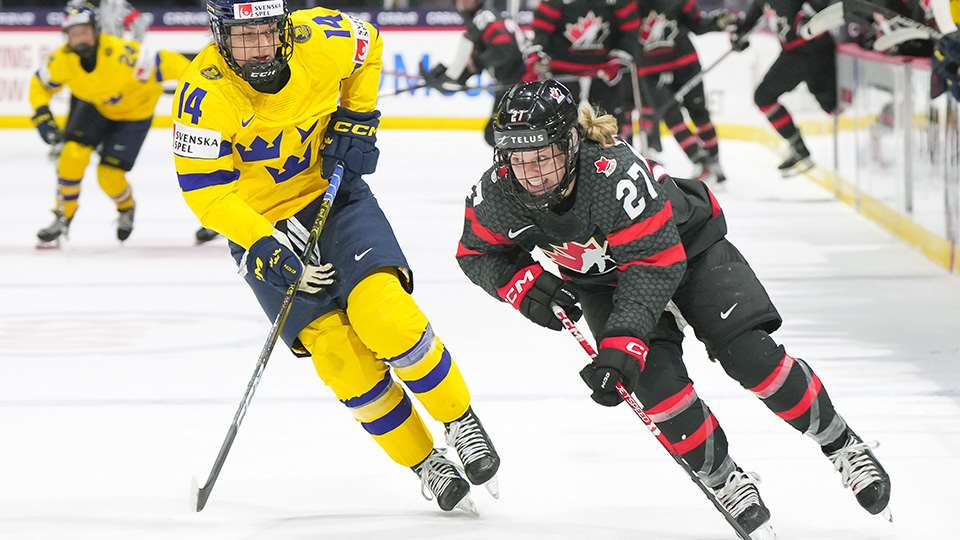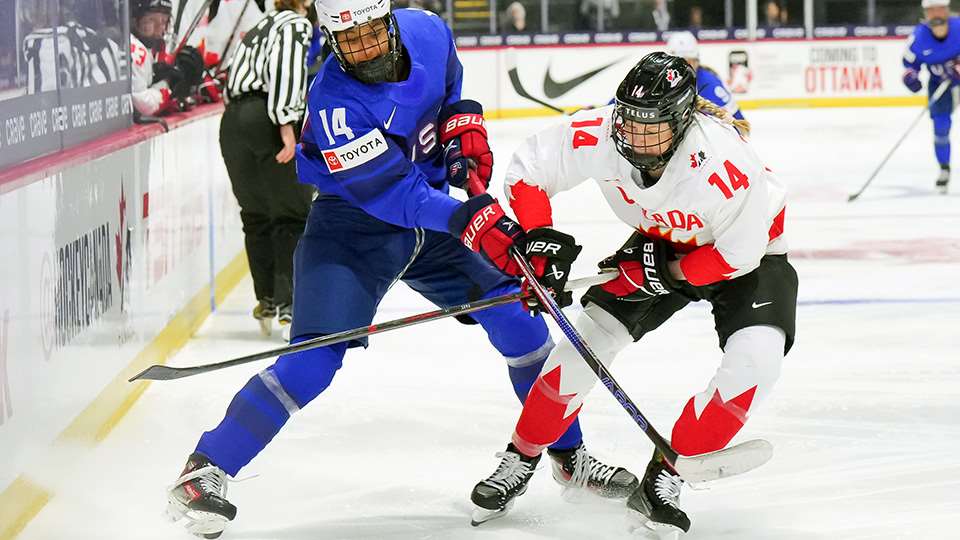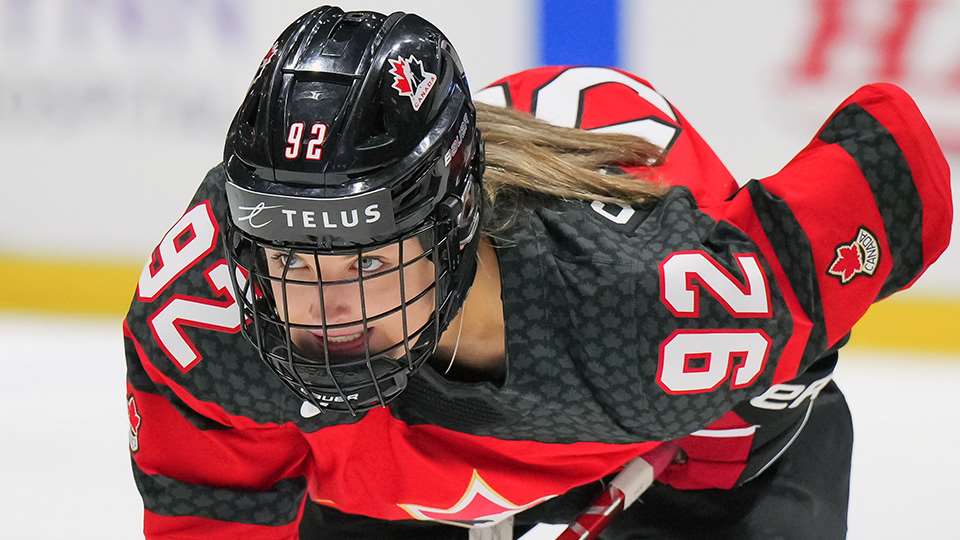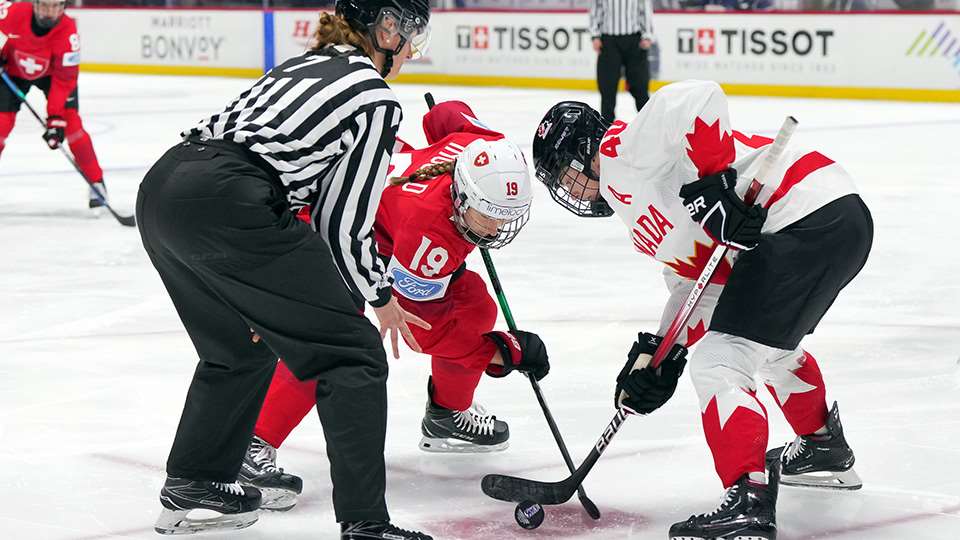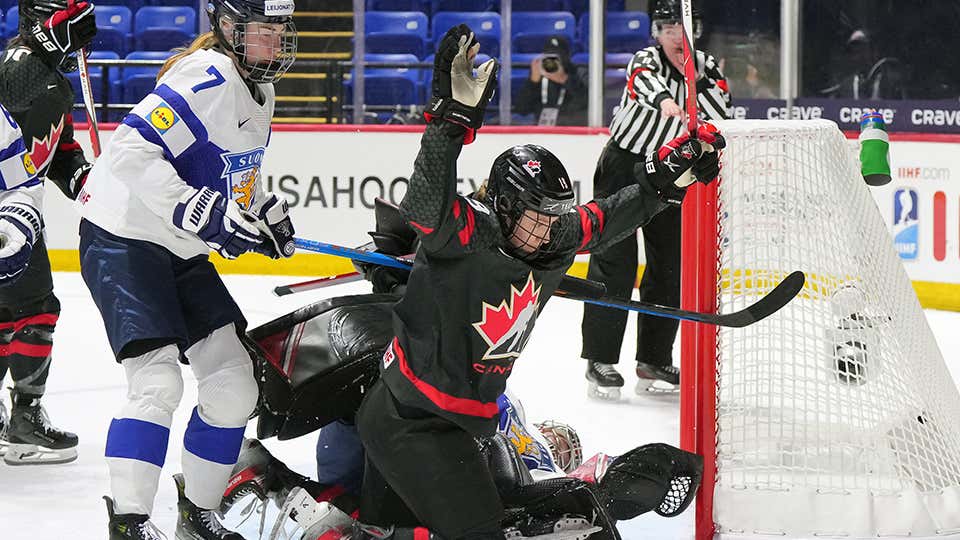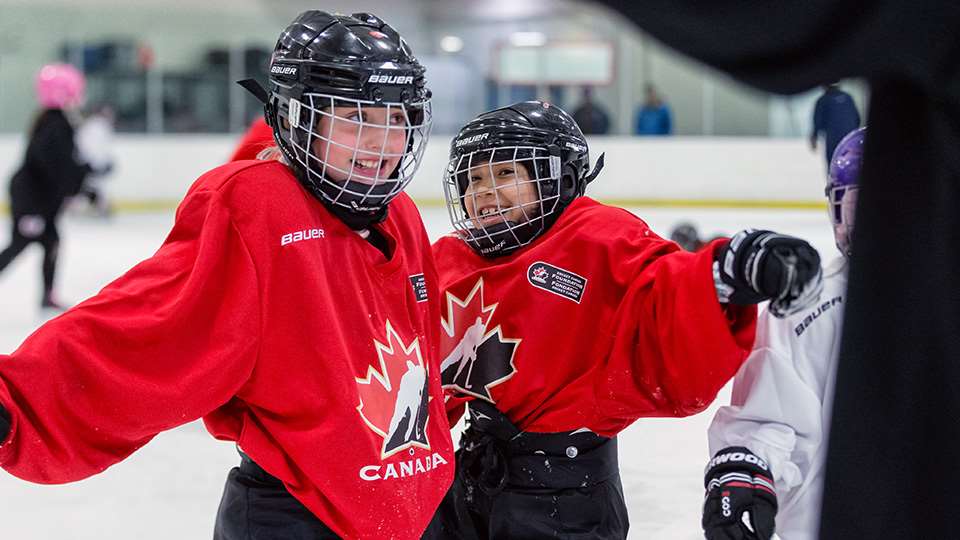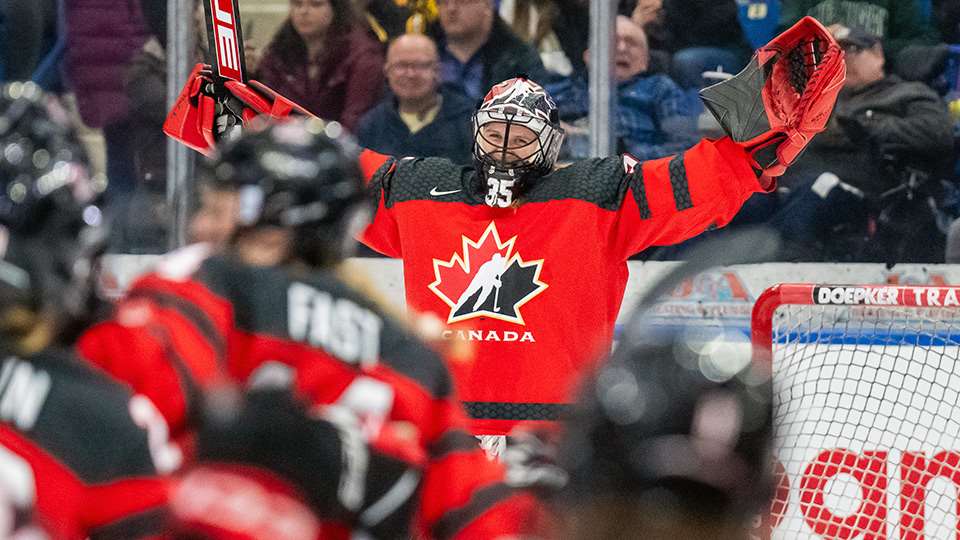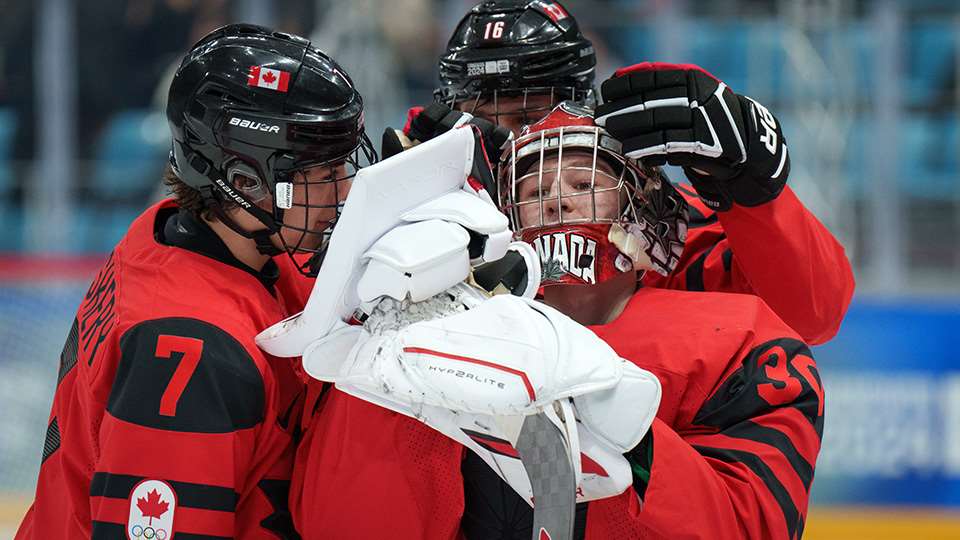QUESTION: We heard 9.91 percent of kids are playing minor hockey. Is that a low number
and can it be improved? If so, how?
BOB NICHOLSON: You know what, our goal is to improve that number. But it's going to
take a lot of work. I think we really have to look at how we try to recruit new young boys and girls
into the game of hockey and we are going to try to work a lot closer with the schools and try to get into
elementary schools to introduce the game.
And I guess the first step is just to make sure they get on the ice and hopefully as they do that, they
will have the choice between speed skating, figure skating and hockey and we have to work with our partners
to do that. That was one of the great things today. I think it really opened up the dialogue for
us to work with the National Hockey League, the players, the CHL.
Everyone's goal here is to get more kids on the ice, more fans involved in the game. But it is a
challenge. Facilities in our country, as you heard, is an issue, and we have to make certain to utilize
that ice time from 9:00 to 3:00 which is open in Canada and around the world.
QUESTION: Bill, three and a half years away from Sochi, half a year away from
Vancouver, probably two years away from a decision, so much emotion spent this week discussing that. Did any
of that surprise you?
BILL DALY: That's an easy question. No, none of that surprised me. No,
I think we identified that issue right up front. We didn't want to be having to be defending a position
and a decision we haven't even made yet.
We understand the importance of the issue to the hockey world, so you can't really have a summit like that
and not have a thorough discussion on that issue.
So, no, it didn't surprise us, and hopefully we dealt with it in an appropriate and respectful way.
QUESTION: It's been such a long time since leaders in hockey have come together and
done this kind of soul searching. Can you talk about the one thing learned that maybe was a surprise or
the biggest thing learned through these four days?
DAVE OGREAN: Yeah, I'll give you two things because I believe it is important for
somebody to have found something was concrete they could use.
I never realized until I had a chance to have some in depth conversations at the beginning of the week how
similar the Scandinavian countries are with the U.S. and Canada at the grass roots level: Built under
the same model, totally volunteer based, based on the same issues of how to recruit and train volunteers.
And that's why I think that we have a very close relationship with those countries, a uniquely close
relationship.
I would say the other thing is and this is editorializing. I don't know how
everybody else feels about this, but I came away more convinced than ever that we are going to have the NHL
players at Sochi, and some of that is just an emotional feel perhaps. And, by the way, nobody talks
about the Olympics and their emotional relevance better than John Furlong.
But there is a simple presence here by the people who are going to work together, that have to work
together, do work together, and who want this game to be the best. So I'll go to sleep tonight just
personally with faith that they are going to get it done.
QUESTION: Dave, Bob earlier talked about the participation of kids in Canada and
the numbers. Are you happy with the numbers of kids playing in the U.S., especially in the non
traditional markets where you start to see kids from southern California and Texas and places like that?
DAVE OGREAN: I would use John McDonough's phrase, "never satisfied."
It's encouraging to have some improvement, and especially as the concrete result of the membership
development department that we set up under Pat Kelleher's leadership a few years ago; that's working.
We had pretty significant growth, five percent a year at the eight and under level, and we have to do a
better job since we have empirical evidence now as to why kids are leaving and just keeping them in
longer.
But I think we are both seeing a lot of the same problems. There's probably one issue in Canada
which is not quite frankly broadly affecting us in the States and that might be the condition of facilities.
But we are all competing with immigrant populations who have perhaps different sport interests who are
dealing with an economy that's impacting a sport that's not inexpensive to play.
We are dealing with a lot more choices on the sport menu as our populations grow and become more
diversified. So it is very, very similar to the issues that we have with Canada, and that's why we are
closer to Canada, probably psychologically and politically, than anybody else in the world.
QUESTION: We are living in hard times and I would like to ask anyone how they look
to deal with that challenge, particularly in the U.S., and how big is the downturn in the economy in the
world going to affect your organizations?
BOB NICHOLSON: You know what, I'll take that one. It is a challenge on making
sure the kids can play the game and get involved in the game.
The one thing that we have talked about through the various sessions is we see hockey from September
through till April. And maybe we should take the model of some of the other sports. Maybe there
should be hockey for six to seven weeks so they can get involved in the game.
We have to also work with all of our partners, whether it is government or with our corporates to try to
make sure that we get equipment on young kids that is affordable. Those are huge challenges and we have
to try to do those one step at a time, and it's not one group that can do that; it's collectively trying to
get the game cheaper. There are certain costs that are there are that are never going to go away.
QUESTION: For Bob and Dave, we both heard wonderful examples of NHL teams who are
growing their sport within their communities. What about the many communities in Canada and the U.S.
that don't have any clubs?
BOB NICHOLSON: You know what, we are fortunate in our country with our NHL teams.
Dave Branch and myself have orchestrated another meeting at the end of September to try to work with
Hockey Canada and the Canadian Hockey League to look at programs designed for the Hockey Canada and CHL.
I think once those programs are designed, we can take that down into junior level and use that into the
minor hockey associations.
But it's really important that you get the major stakeholders, the NHL and the CHL, in our case, on side,
and I think we can build programs and then we can deliver down to minor hockey.
DAVE OGREAN: We are very fortunate in the States to have as many NHL teams as
we do. They are the biggest and best when it comes to helping to promote the game to be a partner.
Gary takes a lot of knocks for expanding into non traditional markets who were not necessarily immediately
successful, but I will tell you, what is happening in our programs at the grass roots levels in Atlanta, in
Phoenix, in Texas, in Florida, in the Carolinas has been phenomenal. We have more of a national
footprint today with our registration with our membership registration just as the National Hockey League
footprint has gone national, too.
The other thing that really helps, and we have always seen this in the States when the NHL team moves into
a new area for the first time, and I don't mean a town; I mean a state or a region; you will see minor league
hockey crop up all around it.
This may not still be true but there was a wonderful trivia question in the late 90s that was accurate. It
went, what were the two states in America with the most professional franchises? The answer was Texas and
Florida; because they had NHL teams, they had East Coast League teams or AHL, sometimes CHL teams. And
the sport grows when you plant it. And the biggest seed is the NHL.
So from that standpoint, our growth in those areas has been encouraging and strong and the participation
of those NHL clubs as partners in what we do has been so critical.
Chicago is an entrenched hockey area. Illinois is an entrenched hockey area. But John McDonough
and Rocky Wirtz have just revitalized that franchise. They help us so much. But every one of the
24 clubs in America is a vital partner of what we do.
And I think those areas that are not in the shadow of an NHL team or arena, there's a similar kind of
relationship, maybe less horsepower. But we work with the AHL clubs. We work with the NCAA
programs. We work with the United States Hockey League teams. We work with the other minor
leagues. So I think this is a sport where I think the leadership at every level realizes we have to do
it together. So we have a lot of good alliances to let us grow.
QUESTION: Dave, at Air Canada Centre the other day, all of the people involved in
junior development throughout the world made a very eloquent and passionate argument on why their programs
are the best for upcoming prospects. Is there a need for common ground there? Do you think it's
inevitable that there will be competition and hopefully healthy competition for the best pro prospects?
DAVE BRANCH: There's some passion there for sure. I think one of the great
things I will take away from this event is I have a new friend in Slavomir Lener. We have gotten to
know each other over the last couple of days, and he had some great comments about the programs in the Czech
Republic and Slovakia.
And I think one of the things that we all recognize up here is the importance of growing the game and the
importance of the health of the game. And all of us up here have to, as they say, be up about 30,000
feet and look down at what is best locally.
That said, hockey is a very competitive game on the ice and off the ice, and I think that competition will
always be there for the player, but I do view it, as we say, healthy competition. I know I'm speaking
on behalf of the Canadian Hockey League. Ten years ago, we recognized we had some huge issues in terms
of attracting the best young players, and to the credit of the people involved, we responded by better
coaching, better facilities, the latest in technology and the like, and of course our college scholarship
program which is the best in the world.
I think at the end of the day, competition makes the game better on and off the ice, and the key for us
who are in positions of leadership is to continue to embrace each other for the good of the continued growth
of the game.
QUESTION: For Dave or for Bob, is there any future for non contact in the lower
levels of minor hockey?
DAVE BRANCH: I think we both should respond to that, because I think that Bob of
course speaks on behalf of the whole here in terms of minor hockey.
I just want to offer a personal experience, being from Whitby, which I consider to be the capital of
hockey of Canada. The local committee was having problems with its Midget house league in terms of
player registrations. And to their credit they challenged what they could do better and they decided to
eliminate body checking even at that level. And wow, you know what happened? Registrations went
way up. I think that's a positive and it really supported a lot of the statements in the submissions on
the first day.
BOB NICHOLSON: I really think it's important that we do it and we have some issues
around some of our regulations that have been there since 1940, maybe 1930. And we have to make change.
We have to listen to what families, moms and dads and kids want.
The majority of the young girls and boys playing, they want to play with their friends and our regulations
don't allow that. We have to change that to meet the needs of the new family in Canada, the makeup of
that.
We really have to look at how we play the game. There are so many other options. I talked
about, you know, six or seven week leagues. Maybe the season should be divided into three or four
different seasons so that kids can play up till Christmas and then go skiing. If we get more flexible,
and that's what we have to do, I think it's not just about body checking. It's about allowing them to
be able to play when they want to play.
QUESTION: Mike, can you comment about the reports of Donald Fehr taking the interim
director's job, and what the time line would be for any sort of ratification process?
MIKE OUELLET: We are only talking about players' participation in the Olympics
here. But the news reports, I can tell you, are not entirely accurate and there is a process that is
still ongoing. The process isn't completed. When the process is completed and there's an
announcement to be made, everybody will be made aware.
As far as the time line goes, certainly the expectation and the hope is that there's something in place
before the start of training camp, which is, I believe, the 17th or so of September.
QUESTION: Can you speak to the value of import players to the CHL, not just to the
players but to the teams as well?
DAVE BRANCH: That came up during the junior development discussion and there's a
real push/pull there, as it relates to some of the concerns that we expressed, and we recognize that.
We are not insensitive to that.
You know, when it was such a huge political shift going back to the early 90s, we started to get a huge
number of calls and the requests for players from overseas to come and play. It resulted in us putting
a cap system in place where each team is capped at two.
I think the challenge is, can we reduce to one, should we reduce to one. I think there's some value -
obviously there's significant value to players wishing to come and play and develop within the CHL structure,
but once again, for those of us that are in positions of leadership, we can't overlook the need to see what's
best for the game and what adjustments we should consider there.
I think it's incumbent upon us, based on what we heard here, and quite frankly the last little while, that
we have to address that as an area of serious discussion.
QUESTION: Considering how contentious the decision is on getting players into the
2014 Olympics, when the next C.B.A. negotiation is done, do you plan on settling not only the 2014 Olympics
but also 2018?
BILL DALY: Look, I wouldn't characterize the issue as being a contentious issue,
vis a vis the PA and the League at this point in time. We have to go through our own process, make the
best-informed decision on behalf of the League and then talk to the Players' Association about it. So
it may or may not be contentious, I suppose.
I think, as I said on the panel yesterday, having a defined international calendar, with or without the
Olympics, is a good idea, and I think I answered a question sometime today about this; I certainly can see
reaching an agreement on that calendar vis a vis the Players' Association, kind of separate and apart from
the Collective Bargaining Agreement, including on dates that may extend beyond the Collective Bargaining
Agreement, because I think in some respects, it's a separate discussion.
So, yes, I think having a defined international calendar and what we are participating in and what we are
trying to achieve is an important thing to do, and something that we are going to have discussion on.
MIKE OUELLET: I'll just echo those comments as well from a business perspective,
having a defined calendar makes a lot of sense for sponsors, for broadcasters, for promoters and for fans who
want to know what to expect down the road.
As Bill said, our involvement in international hockey is a partnership and we can decide at any point in
time during the course of a C.B.A. whether there are certain events we want to conduct and we have an
international committee that makes those decisions.
I'm not sure how long the next C.B.A. term will be either, so can we say that we'll play in the 2018
event? I can't tell you that right now. But we certainly recognize the value of having a set calendar
for international play.
THE MODERATOR: Thanks very much.
DAVE OGREAN: Thank you to you guys, we are all trying to make this game more
popular, get more kids to play it, and you do play an awfully important part in that. We know there's a
lot of guys that could be fishing or swimming or doing something like that and I know you are probably
itching for training camp to start, so we gave you some meat in late August to write about.
But the gusto and volume that came out of the media coverage the last several days was very exciting to
see, and it's very important to what we do. From time to time we may not open up to you as much as you
like but we appreciate the job you have to do and the job you do do, because I think we all love hockey.

















